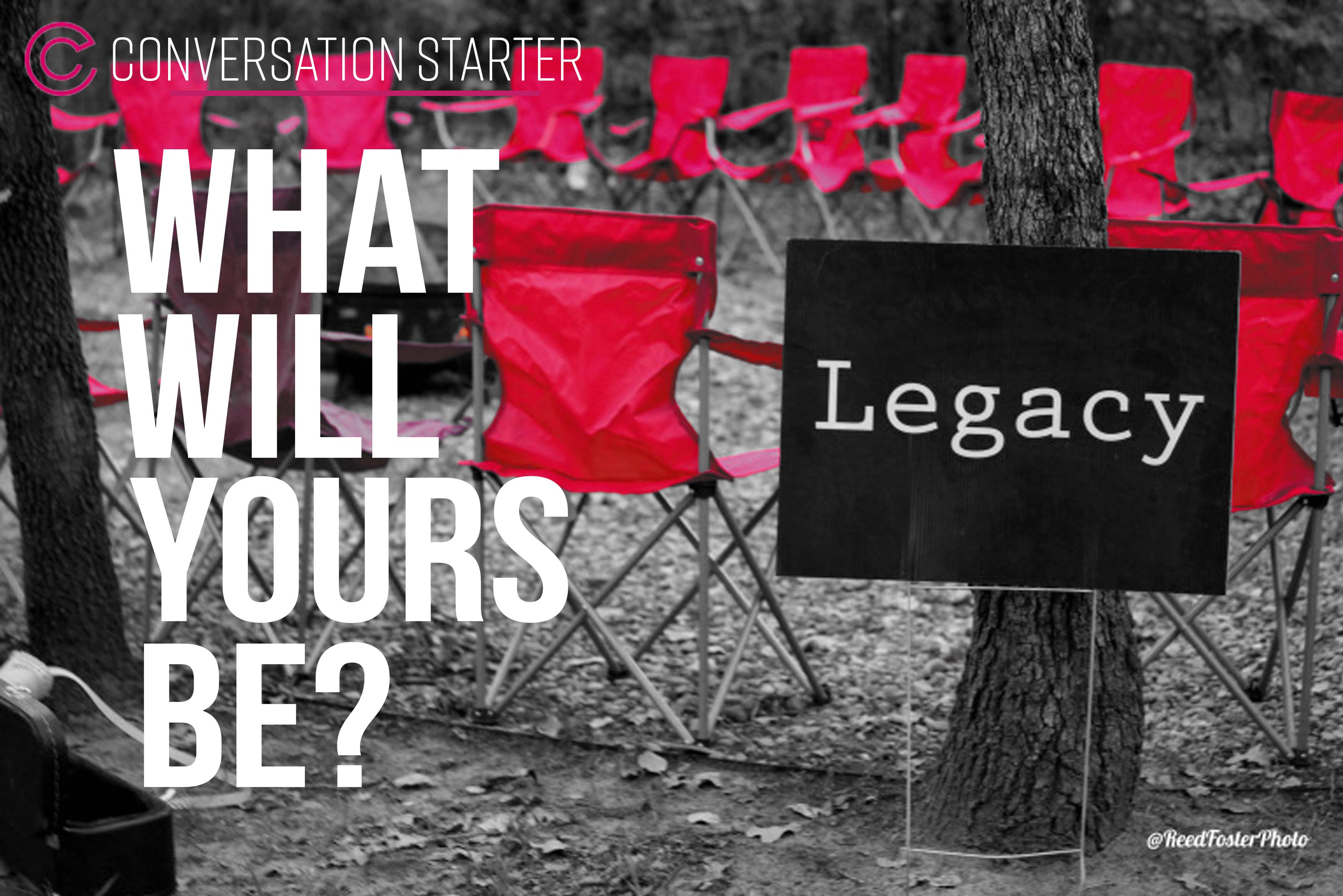Why is it important to think and talk about your legacy? The fact is that 98% of us have never considered what we want our legacies to be. And yet, our legacies alone define the ways in which we’ll be remembered.
Recently, I joined a group of 100 world changers for “The Conversation,” an event designed by author Tammy Kling. Throughout the evening, I engaged with four different groups on the topic of “Legacy.”
Since I work with technology leaders on a daily basis, the term “legacy” has a specific meaning having to do with old or outdated hardware or software. And when I looked through several dictionaries, I noticed that most alternative definitions focused on the past—something that’s been left to us. But during my discussions with each group, we talked more about the future—and about defining our own legacies.
Carve your name on hearts, not tombstones. A legacy is etched into the minds of others and the stories they share about you. – Shannon L. Adler
Each of us has the power to create a legacy. In fact, we make our legacies every day—whether we think about it or not. But even if we do think about our legacies, we still don’t completely control them. Legacies live in the minds of those who know us—or in the ideas and values we leave behind.
So, while we may not get to see them come to fruition, I believe there is a formula for creating lasting legacies:
1. Legacy Defined (L)
“L” is what we want our legacy to be. A legacy can be intentional or unintentional. Spiro Agnew, the vice president to Richard Nixon, did not intend to be the first (and only) VP to resign the office in disgrace. But when he died 23 years later, that was the first line of his obituary. What would your obituary say about you? I recently sat down and wrote a draft of my own, and I was fascinated to see what was truly important to me—and also by what was missing.
2. Legacy Potential (P)
“P” indicates who you are today. It’s a reflection of your natural traits and talents. Those talents can leave a legacy of entrepreneurial drive, deep architectural excellence, or inspiring others to unlock their own legacies. I could decide that I want my legacy to be that of a world-class violinist. But I lack the raw skill or patience to make that happen. So, the legacy you want to leave must be founded on your authentic traits, talents, and passions.
3. Legacy Lived (H)
Every day, your habits define the legacy you live and create. If traits define the potential, then day-to-day actions unlock that potential to make legacy real. I can possess the potential to leave my children a legacy of love and curiosity. But if I do not actively and regularly nurture those ideas in them, then my legacy to them will be different.
4. Legacy Perceived (P)
This is the one element that we cannot control. That means it’s the most challenging one—because we don’t get to decide how others will describe our legacies. Instead, it’s a matter of perception. My friend Michael Peticolas provides a great example. In Dallas, Texas, the name “Peticolas” is building a legacy of award-winning craft beer. But miles away in El Paso, the Peticolas name has already cemented a legacy of legal excellence across five generations. So, even if folks in El Paso can one day enjoy a Peticolas Velvet Hammer beer, they may still equate the Peticolas name with the renowned law firm.
Of course, we may never know exactly how others perceive us. They may have a different interpretation of the legacies we leave—or they may not share how they perceive what we have left. Either way, that doesn’t prevent us from trying to define and create our legacies.
As I reflect on those three hours of “The Conversation” and other discussions I’ve had with friends, I think the clearest description of a legacy comes from Steven Neuner of Alkali Insurance:
“You leave what you live.”
What does your legacy look like? What are you doing to define and craft the legacy you wish to leave? How will you anticipate the perceptions of others? I’d love to learn from your experiences.





